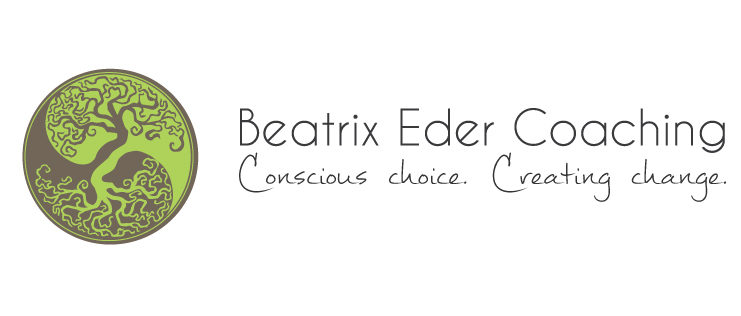
The overseen part in bridging the gap
Men must be active participants if we truly want Gender Equality
Recent trends in Diversity & Inclusion are impacting how we see and experience the world: understanding, accepting and valuing differences in people is becoming an imperative for every business leader and organization. It’s not only a program in HR or Talent Development anymore; it’s not merely a laudable ethical intention; it’s a business priority, embedded in every aspect of the overall strategy.
A recent survey by recruitment consultancy Harvey Nash demonstrated that gender equality is the area that gets most attention in the diversity discussion.
Advancing gender equality leads to countless benefits that improve the quality of life of everybody: women, men, children and even organizations and society. The concrete benefits have been researched by both public authorities and private organizations and include a wider talent pool, increased innovation & productivity, higher financial returns and social cohesion.
Policies versus practice
Unfortunately, true equality in this area is still lagging behind, especially when it comes to women in senior management positions within organizations. Despite numerous policies that have been set up to allow women reconciling a meaningful career and a fulfilling family life, there is a gap between the well-intended initiatives and the actual experience.
The sobering truth is that a narrow focus on solely empowering women has a boomerang effect, inadvertently perpetuating outdated norms and stereotypes that ultimately constrain greater equality both at work and in society.
Men are part of the problem AND part of the solution
Focusing only at women’s empowerment is good but not enough. Men are part of the equation and as long as they are not fully taken into account, there will be no true gender equality. Well-intended policies must be translated in concrete actions – practiced by everyone, on a daily basis.
Change on a systemic level is only created by continuous small actions that are aligned with the values that support the cause.
Reframing the gender equality discussion
At first sight it might be counter-intuitive to look at men when it comes to gender diversity. After all, there are already more men working, there are more men in leadership positions and men are earning more than women.
At the same time, it is also true that societies have undergone a lot of change in the past 30 years. Women are more educated; more represented in the workforce than before and it is acceptable to be a woman who strongly contributes to the financial income of a household. However, this evolution of the female gender role did not go hand in hand with a similar evolution of the male gender role. The area in which this is most apparent is childcare which is still mostly considered “women’s work”.
Childcare is still women’s work
Women still carry the onus of childcare and even in couples where both partners are employed, women usually shoulder more work related to household, logistics and caring for children. This situation often drives women to making a compromise and taking jobs that offer flexibility, allowing them to be available at home when the need arises. However the price of flexibility often implies sacrificing high salary and upward mobility:
- 48% of women in Asia grapple with unequal salaries after returning to work after a career gap
- 35% of employers in Asia say less than 5% of returning women have been offered a more senior or even similar role in their company in comparison to their previous role
- The motherhood penalty—the inequality in earnings due to children—is at 4% per child
- The fatherhood bonus –an increase in salary for working fathers – is 6%
Workplace culture fueling the gender gap
One of the main elements that fuels the gender gap, especially at senior organizational levels, is a workplace culture that presumes that people have to be always available and always mobile to show their loyalty and commitment. With the prevailing gender roles, men are more able –and expected- to prioritize work over family, thus having wind in their sails to bring them to the top of their organization.
Integrating men in gender equality
When we start integrating men within the program of gender equality, we change their role from “supporters” to “active participants” of gender equality.
Gender equality is not just about treating women as equal colleagues in the workplace. Gender equality is also about treating men as equal caregivers at home.
Gender equality in caregiving
How can organizations achieve this in practical terms? A key element is promoting work-life balance and family-friendly habits, in particular mandating and actively encouraging men to take paid paternity leave. This way, women get better support in care giving and household roles and it is easier for them to return back to their professional life.
Consequently, prioritizing paid parental leave for both genders helps to address the gap in pay equity. Furthermore, men win a more balanced lifestyle and the possibility to develop nurturing relationships with their families, in particular their children.
A generous, balanced parental leave allowance available to and used equally by men and women is foundational to narrowing gender gaps, within the context of broader work-life balance and career support policies.
When this is the norm, it has also a positive ripple effect on other employees who don’t have children yet. It gives them a signal that it IS possible to balance their careers with their personal life. In addition, organizations that support paternity leave are building their own reputation and profiling themselves as an employer of choice.
Cultural transformation
Most organizations have not attained this level of gender equality yet and getting there requires a cultural transformation that affects the system on both micro and macro levels. Corporate values are made visible through the daily actions and attitudes of executives and senior managers: coaching them can act as a catalyst to embrace new paradigms and thus developing and sustaining a more diverse and inclusive organizational culture.
Studies show that in today’s complex world, the most successful organizations are not led by one powerful and charismatic leader; rather their success relies upon a collaborative, creative and compassionate leadership process practiced at all levels of the organization.
Questions for reflection
- How does your organization address parental leave?
- Are people in HR and line managers actively promoting policies to working parents?
- How transparent and encouraging is the communication?
- Are all employees familiar with the policies?
- Are employees using the benefits at their disposal?



